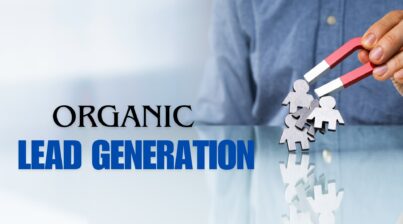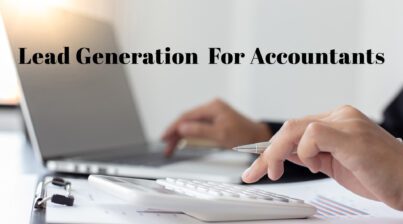A B2B marketing sales funnel is a step-by-step method by which to understand deeply and optimize the journey trodden by potential business customers: one that takes them from the initial point of awareness of a product or service through to post-purchase. It is a systematic model that decomposes the customer’s journey into different stages, each with its own objectives and specified strategies. In short, the foremost meaning of a funnel is to help a business manage leads and convert them into customers who become loyal advocates of the brand.
Importance of B2B Marketing Sales Funnel in B2B Business Strategy
A more defined B2B marketing sales funnel is important for several reasons, not the least among which: being able to watch for and then close potential drop-off points in the customer journey, ensuring that more leads convert into sales. It enables targeted marketing efforts whereby a business delivers tailored content at the very appropriate time, thereby boosting customer engagement. It offers a framework for the alignment of marketing and sales teams, enabling them to work on common goals. Finally, the opportunity helps measure and optimize marketing and sales activities in providing better ROI and business growth.
B2B Marketing Sales Funnel Stages
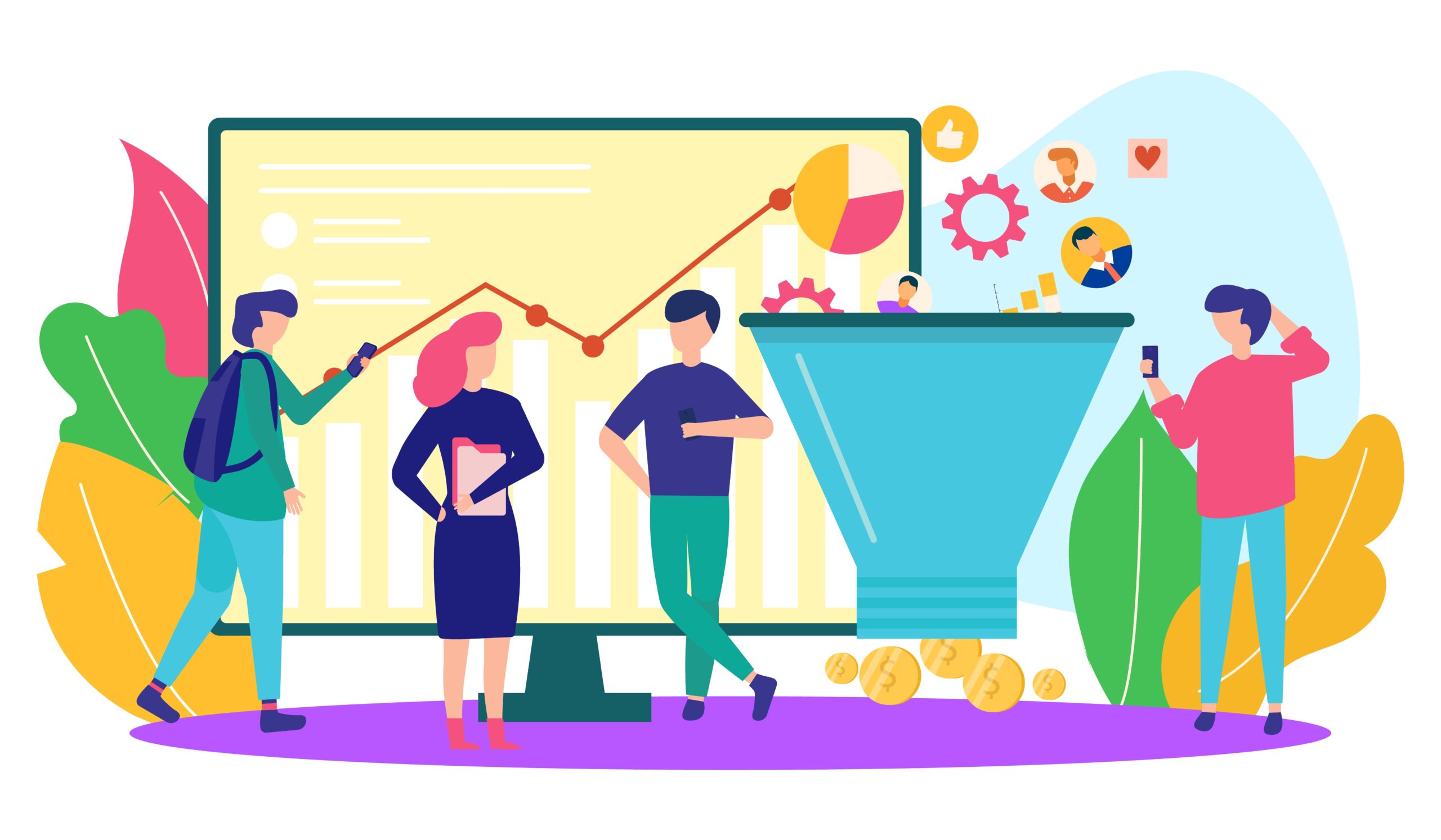
Awareness Stage
- Attracting Potential Customers : The first stage, awareness, speaks to the key focus: pulling potential customers and making them aware of your brand and product or service catalog. This is done with the help of many marketing strategies: content marketing, social media marketing, SEO, PPC campaigns, and a lot more. The idea is to catch interest among a huge general audience who may need the product or service.
- Creation of Brand Awareness : Brand development awareness, or the creation of a strong presence in all possible channels for the brand, refers to developing an extremely effective story around the brand, providing it with high-quality visuals, and much clarity about it so that everything gets effectively conveyed. Only then can one develop the trust and credibility for convincing potentials.
Interest Stage
- Nurturing Leads : That is, the next thing would be to nurture these leads into usefulness and relevance after they are already brand-aware and potentially interested customers. In other words, marketing strategy toward the informative blog posts, e-books, webinars, and newsletters concerning the needs and interests of potential customers. The aim here is building a relationship: to keep your brand at the top of the mind.
- Sharing Valuable Content : Nurturing leads with value content. It is, by nature, more educational, informing, or helping the prospect to solve problems; it sets the stage for brand expertise and portrays the brand as a thought leader in the industry. Content useful at this stage includes case studies, whitepapers, and in-depth articles.
Consideration Stage
- Educate Potential Customers: The potential customer is considering the options, thinking if your product or service will be the optimal selection to cater to their needs. Educate them on precisely what makes your product different and why. You can do that via product demos, comparison guides, and detailed product information.
- Addressing Pain Points: This will have a huge impact on the buyers’ consideration or quartering process, depending on how it speaks to their challenges. It’s all about understanding and detailing personalized challenges and how your product or service is going to remediate them. Personalized content, like tailored email campaigns or targeted case studies, can be very effective.
Conversion Stage
- Closing the Sale: The conversion phase is that part when a potential customer has already made the decision to buy. Here, the emphasis is on closing the sale through the delivery of truly smooth and compelling experiences: personal sales pitches, prices brought out into the open, and last-minute objections removed.
- Completing the purchase: It has mostly been the ordeal to ensure smoothly passing the buying process, without any hitches. This could be through transaction possibilities, payment options, post-sale support, and agreed product details communication. Satisfaction will result directly from a positive buying experience and it opens ways for repetitive business.
Retention Stage
- Customers Relations: After the sale, what is important is follow-up in order to advance a long and successful customer relationship in the future. This includes follow-ups, good customer service, and providing continuous support. In a nutshell, keeping in touch with clients, it means not losing sight of their needs so as to build loyalty and foster repeat business.
- Engaging Repeat Business: This action brings in repeat purchases, whereby the customer is given a chance to buy again. All this can very quickly help by the reward programs and special or relevant individual offers. By continuously giving value, a business is able to convert a first-time purchaser into a loyal evangelist nominating recurring money.
B2B Content Marketing Funnel
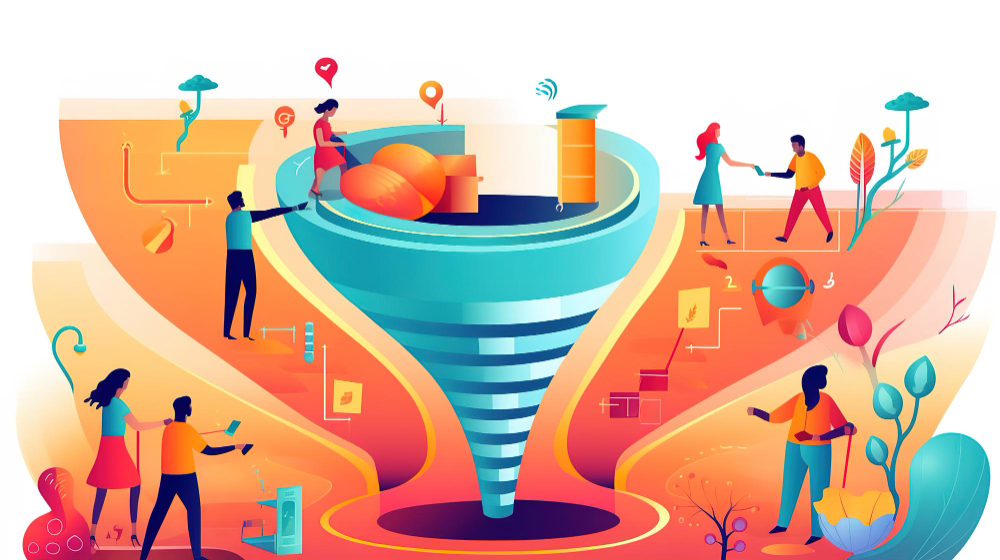
Aligning Content Strategy with Funnel Stages
An effective B2B content marketing strategy dovetails perfectly into the stages of the sales funnel; in each stage, content should be delivered according to time. It aims to get the potential customer to flow through. Each stage needs different content, one that shall fulfill the given needs and questions.
Developing Content for Each Stage
- Awareness Stage Content: At the awareness stage, there is an expectation of content to reach and resonate with a large part of that audience. This includes blog posts, social updates, infographics, and videos that shed light on trends in the industry, common issues, and some potential solutions. Engaging, shareable content is a must to make sure it gets in front of people.
- Interest Stage Content: The content in the interest stage should continue to nurture the leads with in-depth information and thought leadership. This could be in the form of whitepapers, eBooks, webinars, or deeper, detailed blog write-ups on relevant topics. The aim is to make potential customers remain interested in your brand.
- Content for the Consideration: At this stage, you’ll need content that will enable potential customers to make informed purchase decisions when evaluating your product or service. It may be in the form of product comparison, case studies, customer testimonials, and demo videos. The content should emphasize the main features and benefits of what you are offering and take away possible objections.
- The Conversion Stage Content: Friendly content should then be used at the stage of conversion. Some of the types of customer-friendly content used at this stage include in-depth product information, pricing guides, and FAQs. Customized content that is used to close sales loops includes personalized email campaigns and one-on-one consultations.
- Retention Stage Content: In the retention stage, content will have to be more related to maintaining relationships with customers and harnessing repeat business. This includes newsletters, product updates, how-to guides, and exclusive offers. The main aim here would be to continue the value addition and keep your brand in customers’ minds for future buys.
B2B Lead Generation Funnel
Identifying Your Target Audience
The first step to be taken in the B2B lead generation process is understanding who the target audience is. This has a lot to do with making great buyer personas based on elements like industry, company size, job roles, and pain points. The knowledge about the target audiences helps drive business marketing programs in the right direction leading the apt audience toward them.
Attracting Potential Leads
Attraction of potential leads involves a set of executed marketing activities that drive traffic to your website and create interest around what you offer. It includes SEO, content marketing, social media marketing, PPC advertising, among others. So, engage the leads so they are really interested in your business.
Lead nurturing throughout the funnel
Nurturing leads in the funnel involves providing fitting, valuable, and relevant content that engages them in their journey. Content ranges from targeted email campaigns to personalized recommendations and resourceful materials. One tries to build a relationship with the lead while guiding them towards a conversion.
Lead Qualification and Scoring
Lead qualifying and scoring are probably the most critical activities at the lead generation stage, as this is when leads are assessed based on their actions and engagements with your buyer personas. A good lead scoring system gives priority to leads through grading on the chances of converting, ensuring that the sales team gives its best to all promising opportunities.
Passing Leads to Sales Team
Once leads get qualified and scored, they are then passed to the sales team for further qualitative conversation and conversion. Smooth communication and collaboration should be made between marketing and the sales handoff by both teams in the process of ensuring that the sales team will be in a good position to engage and close leads with all relevant information.
B2B Marketing Sales Funnel Stages
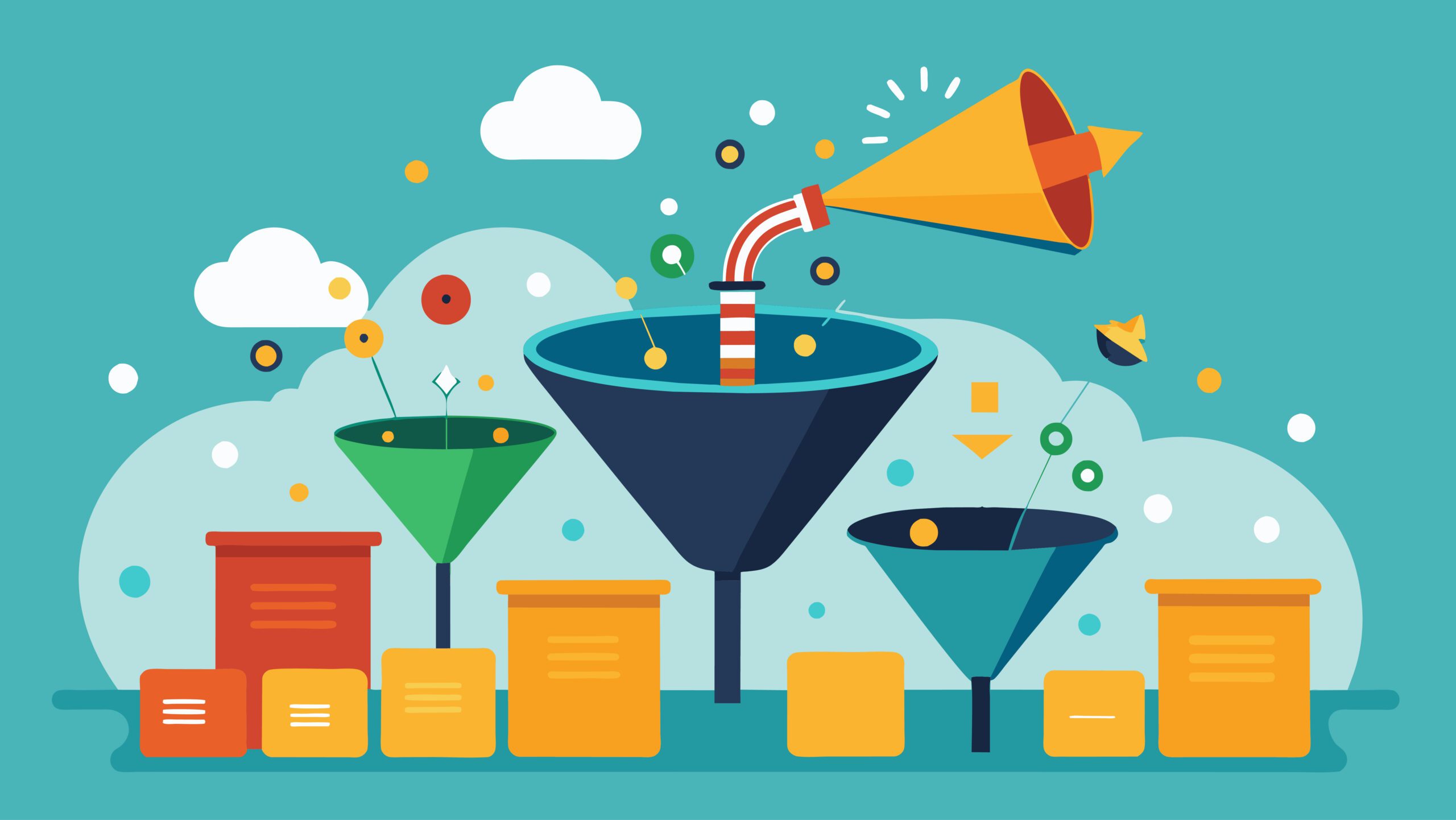
Prospecting
Prospecting is the step initiating the whole process of building a B2B marketing sales funnel . In this step, a sales team tries to identify the potential customers who would have an interest in its product or service by researching and reaching out through any possible channel email, telephone calls, and social media.
Qualifying
In other words, qualifying is the act of sifting through the large numbers of leads available to determine if they are suitable to your product or service. This, therefore, shows the needs, budget, decision-making process, and timeline of qualified leads that have a genuine interest and possess potential for purchasing.
Presenting
Presentation is the stage at which the sales team is making a presentation about how the product or service addresses the needs of qualified leads. This may involve compelling presentations, product demonstrations, and customized proposals for identification of specific benefits and features of an offer, pointing back to the needs at hand. Justification should be brought down to the level that the value solution is due.
Negotiating
This is the stage in the B2B marketing sales funnel sales process funnel when a sales team representative and a prospect come to an agreement on the terms of a sale. A lot of details are involved at this stage, such as issues of price, terms of the contract, and schedules for delivery, among others, which the sales team engages in negotiation with potential customers.
Closing
The closing is the final step in the B2B marketing sales funnel, where the potential customer decides to make a purchase. A well-done closing process induces formidable satisfaction and lays the ground for a good, long future relationship: finalization of the contract, papers, shipping of the sale.
B2B marketing Sales Funnel
Combining Marketing and Sales efforts
Marketing and sales need to drive along connected efforts in a B2B marketing sales funnel. In addition, both marketing and sales should be collaborative in nature and common goals should be set. The two functions can further share information and exchange feedback on strategies. This seamless interaction of marketing and sales can effectively lead to generation, nurturing, and conversion of leads.
Matching the B2B Marketing Sales Funnel with the Sales Process
Aligning the B2B marketing sales funnel with an organization’s sales process involves coordination between marketing and sales teams to achieve consistency in messaging, shared customer insights, and collaboration on content and campaigns. Therefore, such a funnel will be aligned within the sales process to come up with a smooth and systematic customer journey.
Measuring and Optimizing the B2B Marketing Sales Funnel
Improvement is to be continuous in the B2B marketing sales funnel only through measurement and optimization will this be possible. It includes tracking such measures as quality of leads, conversion rates, and length of sales cycles, among others, which can help identify what areas are in need of improvements. Further routine reviewing and fine-tuning of the funnel brings about great efficiency, high conversion rates, and very high overall performance.
Conclusion
The B2B Marketing Sales Funnel specifies a step-by-step systematic handling of the customer journey from awareness to purchase and far beyond. There are different stages, each having well-defined objectives and strategies. An effectively defined funnel is important to attract, nurture, and convert leads that are secured and maintain long-term customer relationships.
A well-thought-out B2B marketing sales funnel and sales funnel will ensure a business plans for success. This is basically meant to enable businesses to identify fall-off points, have an idea of where to maximize marketing initiatives, and enable alignment between marketing and sales efforts with results, the measurement of performance, and optimization.
In a B2B marketing sales funnel , continuous improvement deals with reviewing, tweaking, altering, and fixing of all stages along the sales funnel. Some might include keeping abreast with industry trends, trying a few new marketing tactics, gathering and analyzing client feedback, and arriving at decisions based on insights gleaned from the data. In that respect, continuous funnel improvement will drive long-term business success and keep you ahead of the race.


